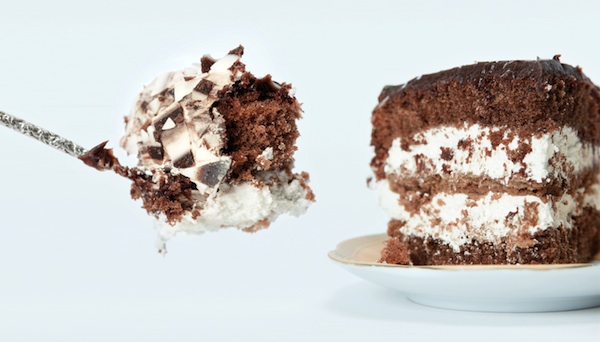To Eat Less, Imagine Every Bite

Craving a candy bar? Dive right into your fantasy of eating every chocolaty bite. New research suggests such detailed imagery could actually help you eat less.
People who imagined every chew and swallow of a food ate less of that food when given the chance to than people who imagined other mundane tasks or visualized other foods, according to a study published today (Dec. 9) in the journal Science. The findings may help people learn to manage their food intake outside the lab, researchers say. [7 Diet Tricks That Really Work]
Force of habituation
People get more excited about the first bite of a burger than the tenth because of a process called habituation. Habituation is a bit like boredom: Your brain has been there, done that, and it's just not going to get excited about that particular stimulus anymore.
In fact, habituation is one of the major cues people use to stop eating. Feelings of fullness kick in too late to slow people down during a meal, so people rely on psychological processes and outside cues to know when to put down the fork, said study researcher Carey Morewedge, a Carnegie Mellon University psychologist.
In the new study, Morewedge and his colleagues were interested in how imagined cues could affect consumption. Imagination can elicit the same physical responses as real-life experience, Morewedge said. But all of the research on craving suggested that instead of making people want to eat less, imagining food makes them want to eat more: Picture a warm loaf of bread coming out of the oven, for example.
"People seem to habituate to all these different kinds of stimuli," Morewedge told LiveScience. "We were wondering, 'Why do cravings seem to be a unique exception?'"
Sign up for the Live Science daily newsletter now
Get the world’s most fascinating discoveries delivered straight to your inbox.
Hunger games
Morewedge and his colleagues suspected that the kind of imagery people build around food might be the reason. Imagining completing a task activates the same neural circuits as really doing the task, so the researchers suspected that people might habituate to foods just by imagining eating them.
So Morewedge and his colleagues asked volunteers to mentally picture eating 30 M&Ms and putting three quarters into a washing machine. A second group imagined putting 30 quarters into a washing machine and eating three M&Ms.
Next, the researchers asked both groups to eat some M&Ms out of a bowl in preparation for a "taste test." Then they surreptitiously weighed the bowl.
Volunteers who imagined eating 30 M&Ms ate about half as many real M&Ms as those who imagined eating three candies, the researchers found. Three imagined M&Ms didn't induce habituation, they reported, but imagining eating ten times more habituated people as if they'd really let all those M&Ms melt in their mouths.
The absolute differences between actual M&M consumption were small, with the first group eating 2 grams to the second group's 4 grams, but the pattern held in four other experiments: People who imagined the process of eating a food ate about half as much as people who imagined moving a food around, eating another food (in this case, cheddar cheese), or doing another task.
"Merely thinking of a food does increase our appetite for the food, but if we perform the mental imagery that would accompany its actual consumption, this kind of thought actually decreases our desire for the food," Morewedge said.
The imagination diet
Imagining a food didn't decrease people's ratings of how much they enjoyed that food, Morewedge said, so it wasn't a growing dislike of the imagined food driving the effect. Hunger couldn't explain the difference either, he said: Participants who rated themselves as more hungry during the experiments showed the same habituation effect.
"Thinking about food has many of the same effects on eating as actually eating the food," Leonard Epstein, a professor of pediatrics and social and preventive medicine at the University of Buffalo, told LiveScience. "That's new."
Epstein, who was not involved in the study, called the research "very, very creative."
"I'd like to extend this to other types of food, to see whether this effect lasts or whether it's a one-time thing," Epstein said.
The researchers are now investigating the phenomenon in more detail, including asking people to come to the lab hungry so they can control the amount of food they eat before trying the imagination task. Ongoing studies will look into how long the imagination effect lasts and how strong it is in real-world settings, Morewedge said.
You can follow LiveScience Senior Writer Stephanie Pappas on Twitter @sipappas

Stephanie Pappas is a contributing writer for Live Science, covering topics ranging from geoscience to archaeology to the human brain and behavior. She was previously a senior writer for Live Science but is now a freelancer based in Denver, Colorado, and regularly contributes to Scientific American and The Monitor, the monthly magazine of the American Psychological Association. Stephanie received a bachelor's degree in psychology from the University of South Carolina and a graduate certificate in science communication from the University of California, Santa Cruz.









